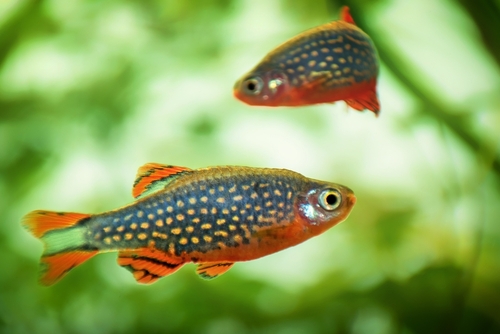Find the greatest companions for your Galaxy rasbora. I’ve got them in this list of the 15 best Galaxy Rasbora tank mates!
The Best Galaxy Rasbora Tank Mates are fish that can handle being in the same parameters of water, heat, and habitat without also having conflicting temperaments with the rasbora. Sizes should be close in order to avoid dangers of eating one another, and temperaments should also match to stop the risk of infighting.
In this article I’ll go over the top 15 best tank mates for the Galaxy Rasbora. We’ll see what creates such a good community about these fish, including their origins and habits. Let’s jump right in!
Contents
Galaxy Rasbora Tank Mates – What You Need to Know
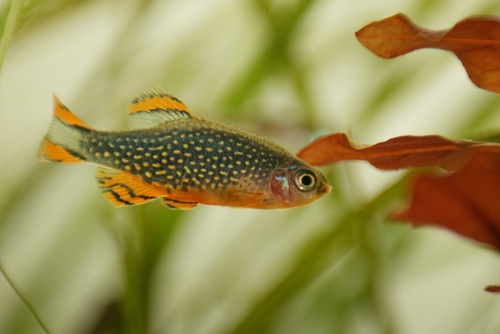
If you have all of the basics about caring for your galaxy rasbora down, you’ve got a good head start on finding compatible tank mates. Let’s go over these basics in the brief descriptions found below.
Temperament
The personality or temper tendencies of a fish are the most important aspect of finding good tank mates. The galaxy rasbora is a very peaceful, almost shy fish. Couple that with it’s size, which we’ll discuss below, and you have a fish that absolutely can’t coexist with big bullies.
You need to find other fish that are gentle, serene, or just not energetic or exploratory enough to try and start anything violent with the more timid rasbora.
Size
Galaxy rasbora are, as previously mentioned, very small fish in the world of aquariums. They only reach about one and a half inches long, at the most. This means, to avoid finding your galaxy rasbora missing one day, you need to use tank mates that are not much larger or not carnivorous enough to try and eat the rasbora.
Competition
Food competition is an often-overlooked aspect of finding good tank mates, sadly. Galaxy rasboras don’t eat much, but when they do, it usually consists of foods like tiny live shrimp, algae, and fish flakes. Just make sure any tank mates do not try to take the galaxy rasbora’s food!
Parameters & Tank Setup
Finally, you should make your galaxy rasbora feel right at home with a tank that is at least 10 gallons, with more added for every fish. Rasboras like to school with one another, so keep that in mind, too.
Their tank temperature should remain at about 65 to 80 Fahrenheit; this frees you up, because such a large range will be comfortable to plenty of tank mates, too.
Best Galaxy Rasbora Tank Mates
Now it’s time for the main event: the list of great tank mates for your galaxy rasbora!
- Amano Shrimp
- Emerald Dwarf Rasbora
- Harlequin Rasbora
- Pygmy Hatchetfish
- Endler’s Livebearers
- Ember Tetras
- Chili Rasboras
- Neon Tetras
- Guppy
- Rummy Nose Tetra
- Bronze Corydoras
- Panda Corydoras
- Pygmy Corydoras
- Honey Gourami
- Glowlight Danio
Need some more information? We’ve got you covered with our summaries below.
Don’t miss out on these other top posts in this category:
1. Amano Shrimp
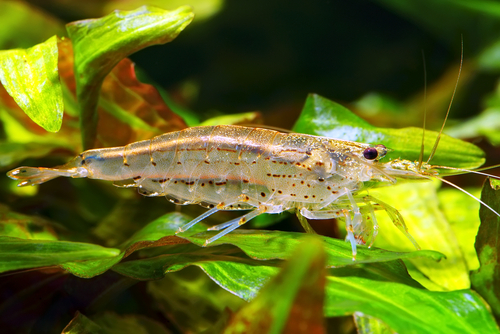
- Scientific Name: Caridina multidentata
- Adult Size: 2 inches
- Compatible With: Galaxy Rasbora
- Care Level: Easy
- Origin: Japan
The amano shrimp is fine being its peace-loving self on the bottom of the aquarium. It’s too small to try and eat your rasbora, and interesting to look at.
The amano shrimp is usually brown or bronze, and almost see-through.
Pros of keeping with Galaxy Rasbora:
- No aggression
- Cleans up tank
- No food competition
Cons of keeping with Galaxy Rasbora :
- None
2. Emerald Dwarf Rasbora
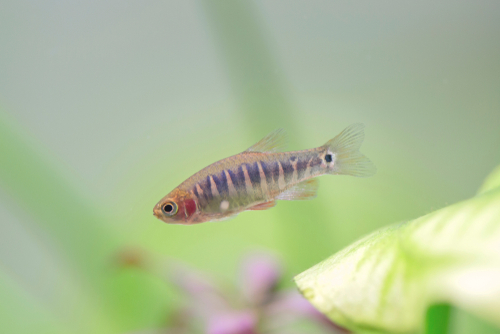
- Scientific Name: Celestichthys erythromicron
- Adult Size: 1.5 inch
- Compatible With: Galaxy Rasbora
- Care Level: Easy
- Origin: Myanmar
The emerald dwarf is truly unique to look at. It is typically jewel-colored with tiger-like stripes and a fire-colored face matching its fins.
This fish is peaceful, but curious. It likes to know what’s going on in every corner of the tank, making it fun for you to watch but not a bully toward other rasboras.
Pros of keeping with Galaxy Rasbora:
- No aggression
- No food competition
Cons of keeping with Galaxy Rasbora :
- none
3. Harlequin Rasbora

- Scientific Name: Trigonostigma heteromorpha
- Adult Size: 1.75 inches
- Compatible With: Galaxy Rasbora
- Care Level: Easy
- Origin: Singapore
The harlequin rasbora is beloved for it’s easy of care and beauty. It is gold, with a sporty speck of black on the sides and tail.
It loves to swim with others of it’s kind and play, but won’t bother the galaxy rasbora.
Pros of keeping with Galaxy Rasbora:
- No aggression
- No food competition
Cons of keeping with Galaxy Rasbora :
- None
4. Pygmy Hatchetfish
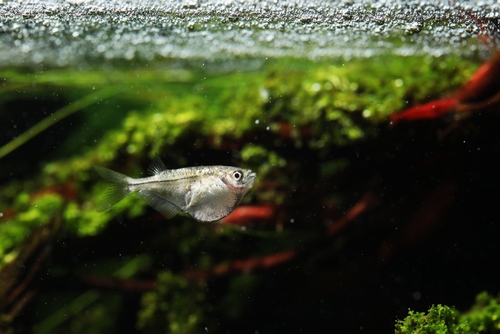
- Scientific Name: Carnegiella myersi
- Adult Size: 1 inch
- Compatible With: Galaxy Rasbora
- Care Level: Easy
- Origin: Amazon
Hatchetfish are known for being shaped like a hatchet, and the pygmy variety is no exception. It is small, unable to harm your rasbora.
This fish is usually silver with speckles of beautiful color. It won’t have any issue with your rasbora, and eats at the surface of the tank.
Pros of keeping with Galaxy Rasbora:
- No food competition
- No aggression
Cons of keeping with Galaxy Rasbora :
- None
5. Endler’s Livebearers
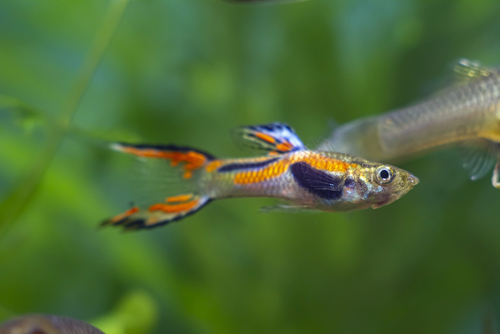
- Scientific Name: Poecilia wingei
- Adult Size: 2 inches
- Compatible With: Galaxy Rasbora
- Care Level: Easy
- Origin: Central America
This fish is beautiful, but mostly gets it’s reputation from how simple it is to breed them and raise their fry healthily.
Endler’s livebearers make good tank mates because they’re small, peaceful, and keep to themselves. They are yellow-to-pale, with big dark eyes and interestingly shaped forked tails.
Pros of keeping with Galaxy Rasbora:
- No aggression
- No food competition
Cons of keeping with Galaxy Rasbora :
- None
6. Ember Tetras

- Scientific Name: Hyphessobrycon amandae
- Adult Size: 1 inches
- Compatible With: Galaxy Rasbora
- Care Level: East
- Origin: South America
Ember tetras are named for their hot red appearance. They bear many similarities with goldfish, but have black, barb-like fins.
Ember tetras like to play with several of their kind. Otherwise, they’re peaceful.
Pros of keeping with Galaxy Rasbora:
- No aggression
- No food competition
Cons of keeping with Galaxy Rasbora :
- None
7. Chili Rasboras
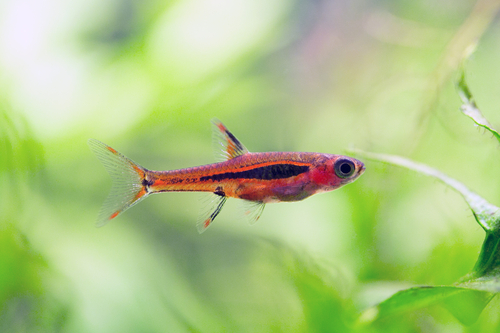
- Scientific Name: Boraras brigittae
- Adult Size: 0.8 inch
- Compatible With: Galaxy Rasbora
- Care Level: Easy
- Origin: Borneo
Chili rasboras are named for their red colors. They are very tiny, but you’ll know them by the clouds of their own species that they like to swim in.
Chili rasboras are very small, but if you get up close, you can see beautiful orange bellies and dark blue stripes on their bodies and each fin. These are cute, tiny peace-lovers.
Pros of keeping with Galaxy Rasbora:
- No aggression
- No food competition
Cons of keeping with Galaxy Rasbora :
- None
8. Neon Tetras
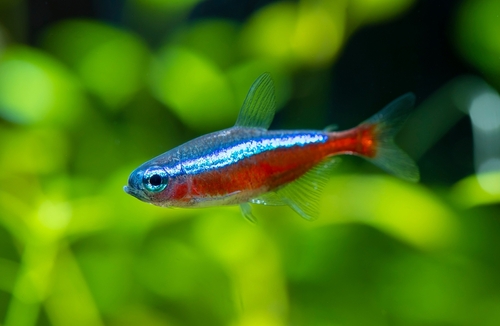
- Scientific Name: Paracheirodon innesi
- Adult Size: 1.5 inch
- Compatible With: Galaxy Rasbora
- Care Level: Easy
- Origin: Peru, Brazil, Colombia
Neon tetras are thus called because of their bright blue backs sandwiching white and hot pinkish red bodies. They are not only great to look at, but easy to keep alive.
They’re also kindly in temper and like to be social, making them good tank mates for rasboras.
Pros of keeping with Galaxy Rasbora:
- No aggression
- No food competition
Cons of keeping with Galaxy Rasbora :
- None
9. Guppy
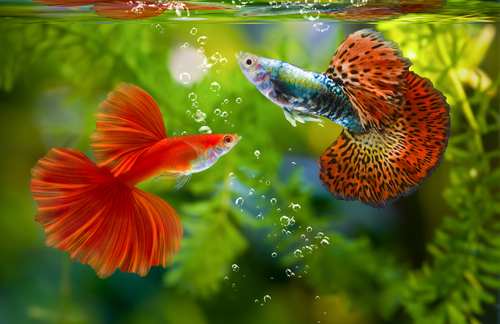
- Scientific Name: Poecilia reticulata
- Adult Size: 2 inches
- Compatible With: Galaxy Rasbora
- Care Level: Easy
- Origin: South America or Captive Bred
The reason these fish are so often bred in captivity is because they’re very easy to handle. They are also lovely, coming in so many different colors and patterns that we’d be here all day describing each variation!
A guppy is small and easily pleased in diet and friends. It won’t cause any trouble or territory disputes.
Pros of keeping with Galaxy Rasbora:
- No aggression
- No food competition
Cons of keeping with Galaxy Rasbora :
- None
10. Rummy Nose Tetra

- Scientific Name: Hemigrammus rhodostomus
- Adult Size: 2.5 inches
- Compatible With: Galaxy Rasbora
- Care Level: Easy
- Origin: South America
Rummy Nose Tetras have bright red faces. These stand out from their long, transparent bodies and the startlingly dalmatian-like tails.
Rummy nose tetras are schooling fish. They have peaceful personalities.
Pros of keeping with Galaxy Rasbora:
- No aggression
- NO food competition
Cons of keeping with Galaxy Rasbora :
- None
11. Bronze Corydoras

- Scientific Name: Corydoras aeneus
- Adult Size: 2 and a half inches
- Compatible With: Galaxy Rasbora
- Care Level: Easy
- Origin: Colombia, Argentina, Venezuela
Bronze corys are hard not to love. They have good-natured faces with mild brown bodies and stay on the bottom of the tank, cleaning detritus.
That said, they are also peaceful and social. This makes them a great match for rasboras.
Pros of keeping with Galaxy Rasbora:
- No aggression
- No food competition
Cons of keeping with Galaxy Rasbora :
- None2
12. Panda Corydoras

- Scientific Name: Corydoras panda
- Adult Size: 2 inches
- Compatible With: Galaxy Rasbora
- Care Level: Medium Difficulty
- Origin: Peru
This cordydora is named for its patterning; white and black spotted, like a panda bear. This small fish will also remain on the bottom of the tank.
It will not threaten its neighbor, the rasbora.
Pros of keeping with Galaxy Rasbora:
- No aggression
- No food competition
Cons of keeping with Galaxy Rasbora :
- None
13. Pygmy Corydoras

- Scientific Name: Corydoras pygmaeus
- Adult Size: 1.2 inches
- Compatible With: Galaxy Rasbora
- Care Level: Easy
- Origin: South America
Another peaceful cory for our list, this fish makes an excellent tank mate to many. They aren’t picky during mealtime, and occupy a small amount of space.
Pygmy corydoras is a tiny example of the species, usually pale silver or yellow, with black stripes.
Pros of keeping with Galaxy Rasbora:
- NO aggression
- No food competition
Cons of keeping with Galaxy Rasbora :
- None
14. Honey Gourami
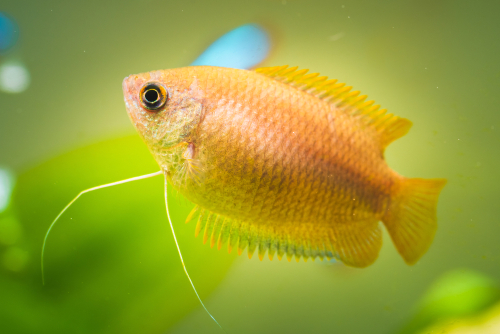
- Scientific Name: Trichogaster chuna
- Adult Size: 2 inches
- Compatible With: Galaxy Rasbora
- Care Level: Easy
- Origin: Bangladesh
Honey Gouramis are well-known for their honeycomb-like colors. They also have interestingly long whiskers trailing from their pointed heads.
Honey gouramis are peace-lovers, too, and won’t cause trouble for the galaxy rasbora.
Pros of keeping with Galaxy Rasbora:
- No aggression
- No food competition
Cons of keeping with Galaxy Rasbora :
- None
15. Glowlight Danio
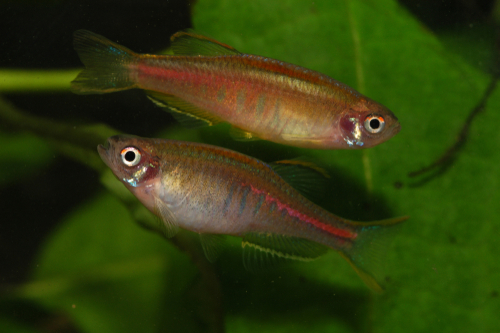
- Scientific Name: Celestichthys choprae
- Adult Size: 1.22 inches
- Compatible With: Galaxy Rasbora
- Care Level: Easy
- Origin: Myanmar
Glowlight danios are small, but will bring joy to the tank by flitting around with high energy. They are called “glowlights” because of their very vibrant colors to match their personality.
Most of these danios are a range of yellow-to-green colors with stripes of blue and orange, vertical streaks of black, red cheeks, and more! They’re also fun-loving but peaceful for the sake of your rasboras.
Pros of keeping with Galaxy Rasbora:
- No aggression
- No food competition
Cons of keeping with Galaxy Rasbora :
- None
In Conclusion
To sum it all up, the 15 best galaxy rasbora tank mates are fish that love to swim in the same tank parameters. This is not the trickiest part of finding tank mates; what you really need are peace-loving fish who won’t clash with the timid schools of galaxy rasboras.
When you want to select tank mates for your galaxy rasboras, it’s crucial to consider their temperament and compatibility with the peaceful nature of the rasboras. I believe going for species that share similar water parameters ensures a harmonious cohabitation.
Additionally, I would suggest you keep in mind the natural behaviors and preferences of each species as they can lead to a thriving and visually appealing aquatic community.
From my best experience, providing ample hiding spots and dense vegetation can further enhance the overall well-being of your tank’s inhabitants. This creates a sense of security, especially for more reserved species like the galaxy rasboras.
Plants like Java moss, Anubias, and Vallisneria not only serve as excellent natural decor but also offer shelter and grazing opportunities, promoting a more relaxed and stress-free environment.
Frequently Asked Questions

What is the ideal water hardness for a Galaxy Rasbora tank?
From my personal experience, the ideal water hardness for a Galaxy Rasbora tank should be between 2 and 10 dKH.
What size tank do I need for Galaxy Rasboras and their tank mates?
A 10-gallon tank is a good starting point for a small school of Galaxy Rasboras. If you plan to keep tank mates with them, I will advise you to factor in the size of those fish as well.
How do I avoid larger tank mates that may view Galaxy Rasboras as food?
Avoid any large fish that may eat, bully, or outcompete Galaxy Rasboras for food. In general, I suggest you should avoid aggressive Galaxy Rasboras tank mates. Fish that are larger in size would require more caution when considering them as tank mates as well.
How do I deal with the shyness of Galaxy Rasbora?
Galaxy Rasboras are shy fish, so it is important to provide them with plenty of hiding places. You can do this by planting your tank heavily and using driftwood and rocks to create caves and crevices.
What should I feed Galaxy Rasboras and their tank mates?
Galaxy Rasboras are omnivores, so they’ll eat a variety of foods. They prefer small, slow-sinking foods in the water column, such as baby brine shrimp, frozen cyclops and daphnia, and micro worms.
How do I breed Galaxy Rasboras with tank mates?
In order to prevent the adults from eating their own eggs, I would advise you move the spawning media into a separate tank. The eggs should hatch within a week, depending on the water temperature.
Another method I would recommend is to place the Galaxy Rasboras in an outdoor mini pond with plenty of aquatic plants during warmer seasons and bring them back inside at the end of the summer.

Ian Sterling, founder of Fishlab.com, began his aquarium journey over 30 years ago, driven by a deep fascination for fish and their diverse personalities. His website, Fishlab.com, is dedicated to making fishkeeping accessible and enjoyable, offering beginner-friendly guidance, expert insights, and a community for aquarists to connect and share experiences.


